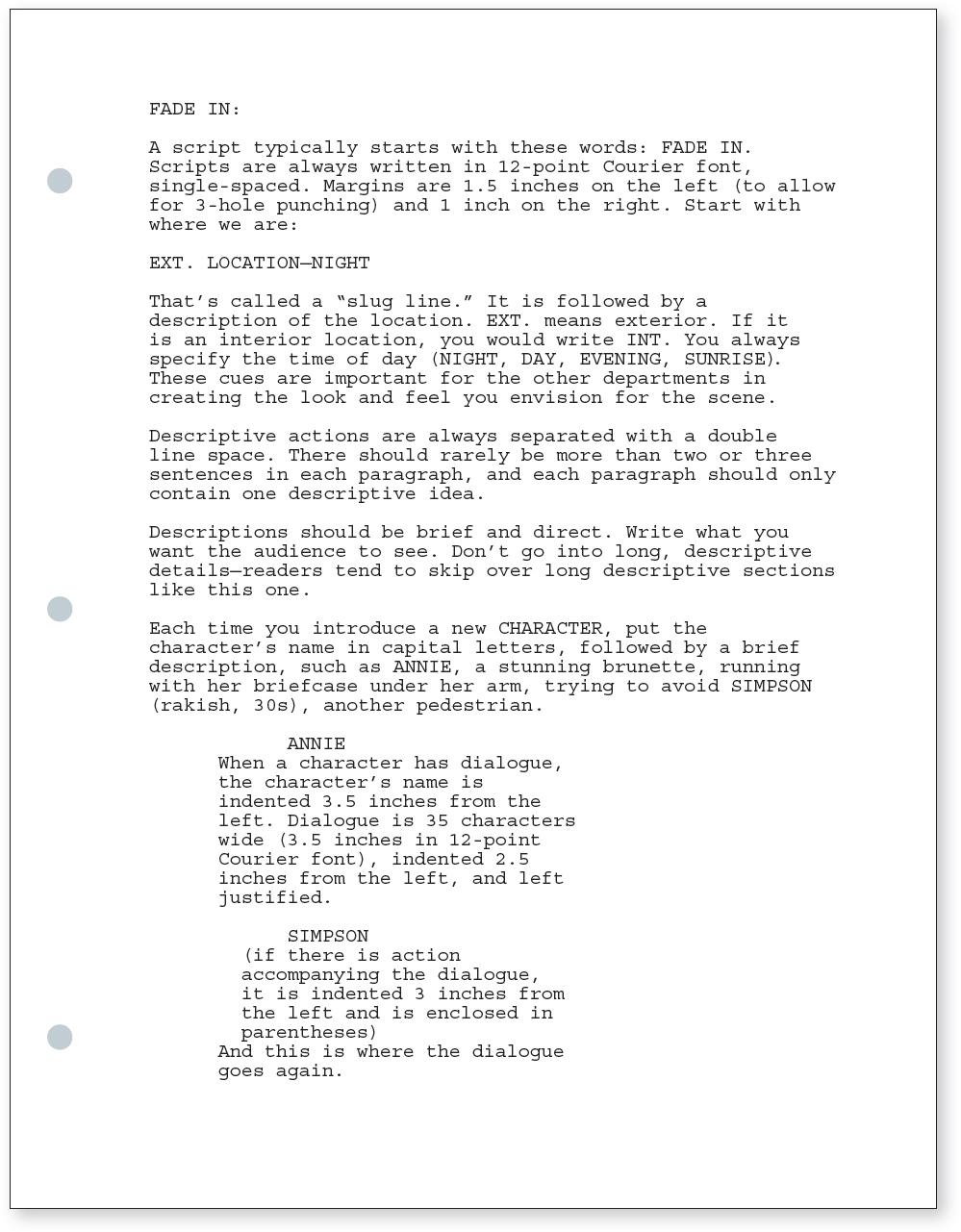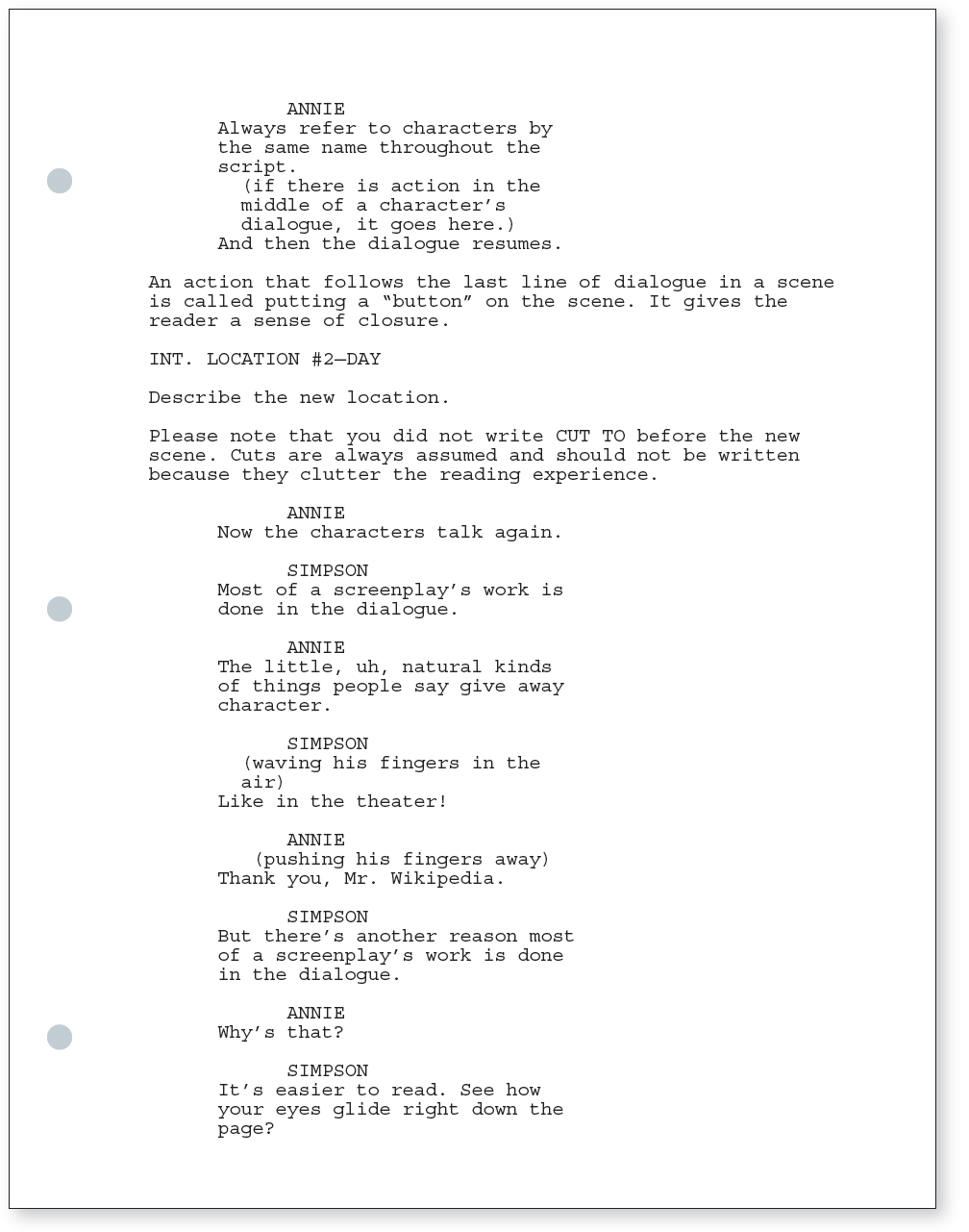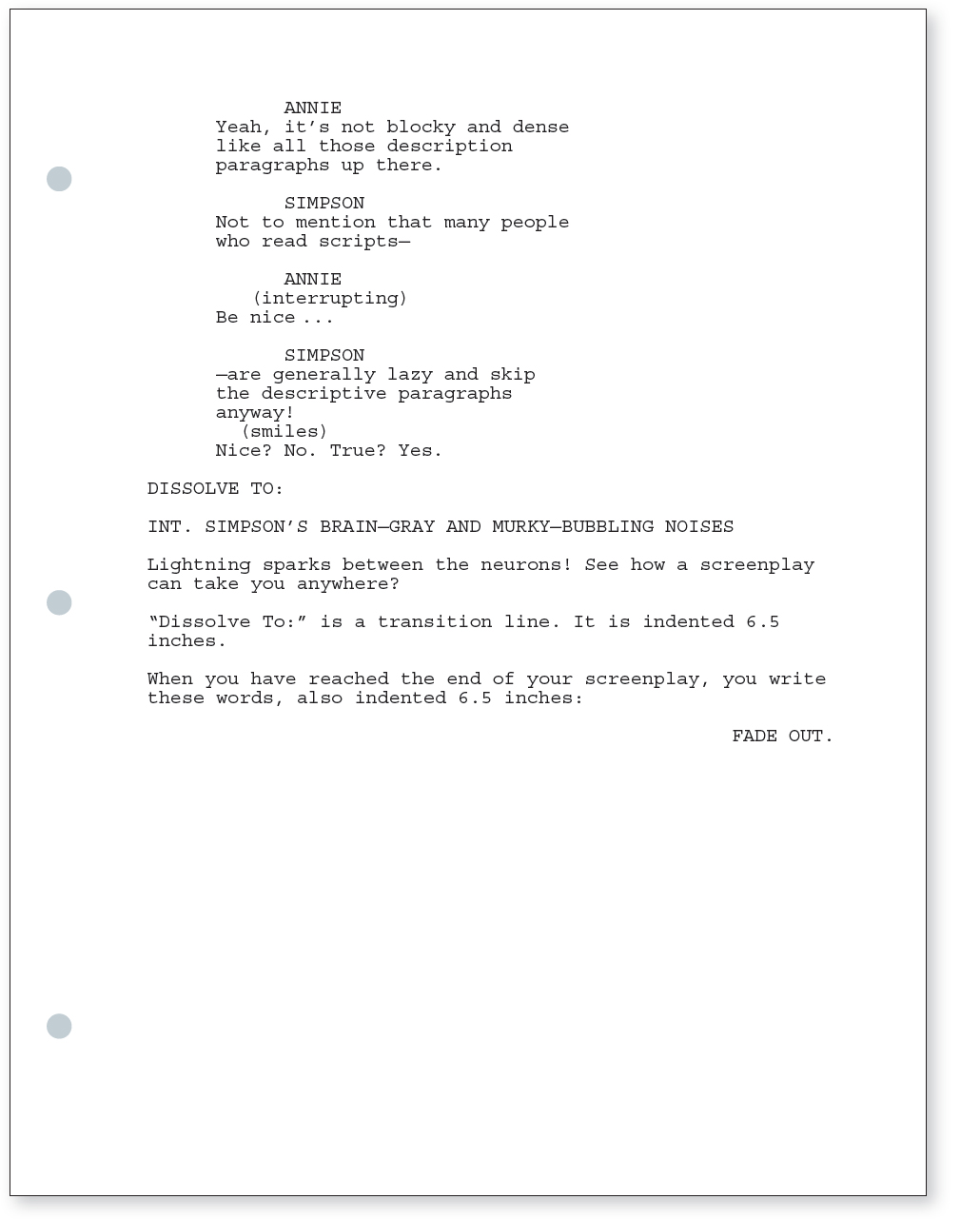Writing and Screenplay Formats
 SAY IT OUT LOUD
SAY IT OUT LOUD
If something important happens in the action, refer to it in dialogue as well. That way, people who only read the dialogue will know what’s going on.
It is an irony—comic or tragic, depending on your point of view—that almost all writers dislike writing. They like “having written”—but writing is often compared to purgatory. In fact, writers are well-known procrastinators, and they will do almost anything to avoid the act of putting words on the page. This is especially true in the film world, because writing is the loneliest profession in the industry. Every other filmmaking craft has strong elements of teamwork and collaboration, whereas the craft of writing is solitary. Many successful screenwriters work in teams, or have groups of other writers who form a core support group, in an effort to ameliorate this inherent dilemma. You may be able to work with a writing partner in your class, but even if not, you can still cheer one another on as you work your way through the writing process.
Writer’s block is a common term used to describe the difficulty of writing. Writers confront the blank page in different ways. Techniques include keeping a strict schedule of “writing hours” or requiring oneself to produce a certain number of pages each day. In addition, many writers develop a highly ritualized set of activities that allow them to get their writing to flow, whereas others adopt more prosaic approaches. More often than not, the best course is simply to jump in and start writing. A writer’s draft is a purely personal experience until he or she chooses to share it with a reader—a thought that need not be foremost in anyone’s mind when the writing process begins. Once a writer has produced a first draft, it is much easier to revise and turn it into a workable draft.
 SCREENPLAY TIMING
SCREENPLAY TIMING
One page of a screenplay = one minute of screen time
Each project has its own rhythms and writing requirements, which affect the writing process. Refer back to the number of pages in each act. Next time you watch a feature film, take a brief look at the time when you think each act ends. You will be surprised to see that the first act ends at about one half-hour into the film and the second act ends at about an hour and a half in to the film.
Always remember that writing is a craft that improves with practice and can be taught and studied. (See Action Steps: How to Get Started Writing Your Script, below.) Though the “right” way to write is the way that works best for you, screenwriters over the years have developed a conventional formatting style that best expresses characters, dialogue, action, and visual descriptions. Because scripts are not ends in themselves—rather, they are like the architect’s drawings that describe a building—these formal conventions help readers visualize what the writer imagines.
 SCREENPLAY FORM
SCREENPLAY FORM
Watch a brief scene from a movie, and transcribe it using screenplay format. Notice what you put in dialogue and what you describe in action, setting, and so on.
Most screenwriters use free specialized writing software called Celtx, a free online program called Scripped, or Final Draft, which has a cost. These and other programs come with templates that automatically format for movies, television, animation, and other presentation requirements. However, since movies are a visual medium, and a good rule of writing is “show, don’t tell,” let’s illustrate what the screenplay form looks like.



ACTION STEPS
How to Get Started Writing Your Script
Before you start writing scenes and dialogue, try these five action steps. They will help you stay focused and ensure that your first draft is a good starting place for further development.
 Pick a title. You can always change it later, but having a title will make your movie feel more concrete.
Pick a title. You can always change it later, but having a title will make your movie feel more concrete. Decide on your theme, and write it down. This will become your touchstone; every scene should relate to the theme, and if you’re ever confused about what should happen next, or what a character should say, the theme will give you inspiration.
Decide on your theme, and write it down. This will become your touchstone; every scene should relate to the theme, and if you’re ever confused about what should happen next, or what a character should say, the theme will give you inspiration. Write your log line. This will also focus you. If you have trouble writing the log line, take the time to make it clear and workable before you start to write.
Write your log line. This will also focus you. If you have trouble writing the log line, take the time to make it clear and workable before you start to write. Write the outline. Some writers like to make a graphic illustration of the story, with large boxes for each act, and smaller boxes for each scene. Others like to make bullet points or notes. But no matter where you begin with the outline, complete it with a formal outline document, listing each scene, who is in it, and what happens.
Write the outline. Some writers like to make a graphic illustration of the story, with large boxes for each act, and smaller boxes for each scene. Others like to make bullet points or notes. But no matter where you begin with the outline, complete it with a formal outline document, listing each scene, who is in it, and what happens. Look at the outline to see if the structure works. Reorder the scenes if necessary.
Look at the outline to see if the structure works. Reorder the scenes if necessary.Now you’re ready to start writing the script!